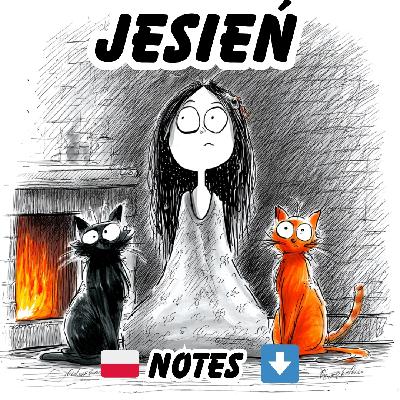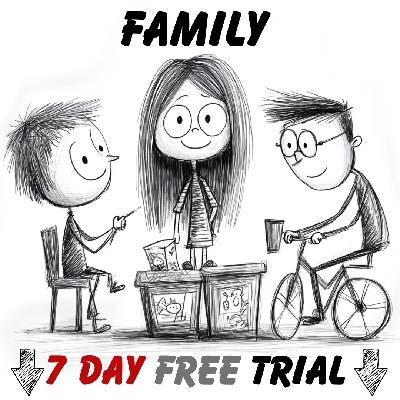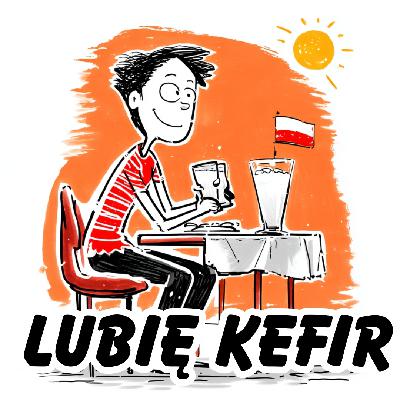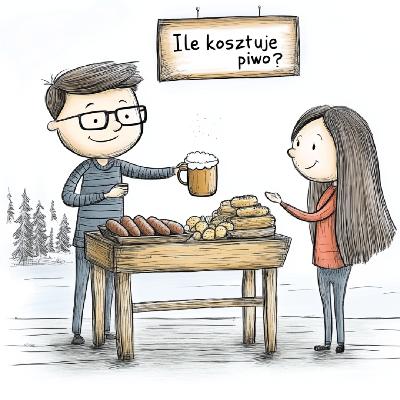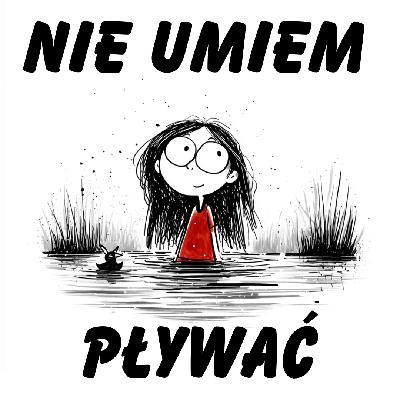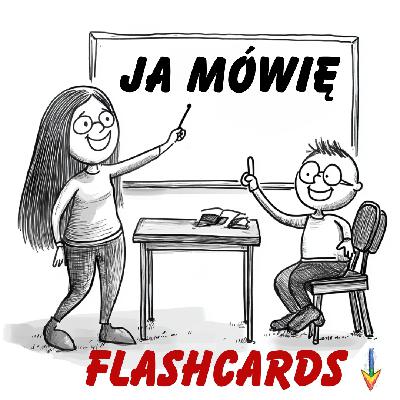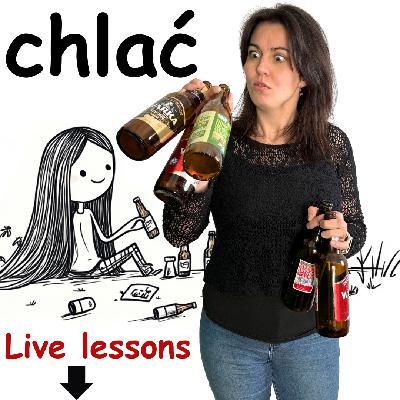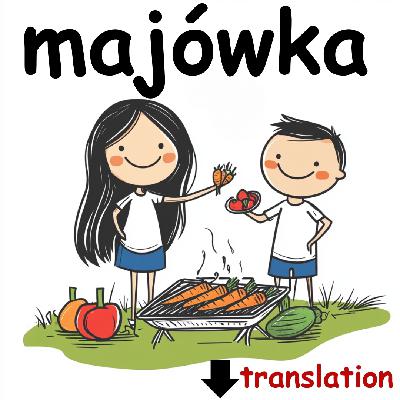Learn Polish While Talking About Autumn 🍂 | Easy Speaking Practice
Description
No dobra, dzisiaj rozmawiamy o jesieni...
Alright, today we’re talking about autumn.
The session opens with casual conversation practice about autumn (jesień) — a warm-up for students before moving to the speaking exam section. The teacher greets students (like Ania and Queen) and starts by asking basic questions:
Czy lubisz jesień? — Do you like autumn?
Kto lubi jesień? — Who likes autumn?
Students share opinions, using simple Polish sentences such as Lubię jesień or Jesień jest fajna. The teacher encourages everyone to speak naturally, even mixing some English to make it easier for A2 learners.
🟠 2. Talking About Food and Comfort
Zrobiłem fasolkę po bretońsku. Znasz? Bardzo dobre danie.
I made “fasolka po bretońsku.” Do you know it? A very good dish.
A natural transition happens — from weather and mood to food, a common conversational topic.
Learners practice vocabulary about Polish dishes, especially fasolka po bretońsku (beans with bacon and sausage).
Key phrases:
Lubię fasolkę po bretońsku. — I like Breton-style beans.
Z boczkiem, kiełbasą i sosem. — With bacon, sausage, and sauce.
This helps learners express likes and preferences, a skill tested in oral exams.
🟠 3. The Weather and Feelings
Zimno, chłodno, przyjemnie, komfortowo.
Cold, chilly, pleasant, comfortable.
Learners describe the weather and temperature, using adjectives to express how they feel:
Jest zimno. — It’s cold.
Jest przyjemnie. — It’s pleasant.
Dla mnie jest chłodno, ale lubię to. — It’s chilly for me, but I like it.
They discuss what kind of weather helps them work or think better, linking emotions with temperature — a typical oral exam theme about “how weather affects you.”
🟠 4. Communication Problems and Humor
Komunikacja to jest duży problem.
Communication is a big problem.
Ania mentions a tough day at work and communication issues. The teacher humorously reacts — Ania, zwolnij ich od razu! (“Fire them immediately!”) — showing a conversational, real-life tone.
The group laughs and stays in Polish conversation mode, which builds comfort for spontaneous speaking — exactly what oral exams test: reacting naturally.
🟠 5. Ghosts, Thermostats, and Everyday Life Vocabulary
Kto bawił się termostatem? Może duch?
Who played with the thermostat? Maybe a ghost?
A funny everyday situation unfolds about someone changing the thermostat temperature at home. Learners joke about who’s guilty — dzieci? mąż? duch? — children, husband, or ghost.
This part mixes domestic vocabulary (termostat, ogrzewanie, temperatura) with humor and cultural comments. It keeps students speaking freely, building fluency without pressure.
🟠 6. Beliefs, Seasons, and Colors
Wierzysz w duchy? Lubię kolory jesieni.
Do you believe in ghosts? I like autumn colors.
The discussion moves into beliefs and preferences, touching on ghosts, good and bad spirits, and the beauty of autumn — czerwony, pomarańczowy, zielony.
Students describe what they like about different seasons — a classic oral exam question:
Lubię jesień, bo lubię kolory.
Lubię wiosnę, bo wszystko jest zielone.
🟠 7. Pumpkin and Cooking Practice
Lubię zupę dyniową z imbirem i mlekiem kokosowym.
I like pumpkin soup with ginger and coconut milk.
The topic shifts to cooking vocabulary and describing recipes — a strong B1 skill but practiced here at A2 level.
They talk about ingredients (czosnek, cebula, przyprawy) and food preferences (lubię, nie lubię).
Also, Queen mentions ekologiczna dynia (organic pumpkin) — useful modern vocabulary for oral exams about lifestyle and food.
🟠 8. Prices and Shopping Practice
Co można kupić w Biedronce za 20 złotych?
What can you buy in Biedronka for 20 zlotys?
Students practice numbers and prices — perfect exam content.
They discuss train tickets (bilet do Warszawy, do Gdańska) and shopping examples (chleb, marchewka, masło).
Key grammar:
Ile kosztuje...? — How much does it cost?
Za 20 złotych można kupić... — For 20 zlotys you can buy...
These are core oral exam patterns for Polish learners.
🟠 9. Stress, Relaxation, and Daily Routines
Marchewka jest dobra na stres. A co jeszcze jest dobre na stres?
Carrot is good for stress. What else is good for stress?
The conversation turns psychological and personal.
Students discuss how they deal with stress:
Zakupy są dobre na stres. — Shopping helps with stress.
Lubię jeździć pociągiem. — I like traveling by train.
To mnie uspokaja. — It calms me down.
The teacher mentions his father was a railway worker (kolejarz), adding a personal touch — again, strong oral practice material.
🟠 10. Cold Weather Habits and Cleaning
Co robisz, gdy jest zimno?
What do you do when it’s cold?
Learners discuss routines and habits in winter, introducing verbs like sprzątać, gotować, pracować.
Ania says cleaning helps when it’s cold; the teacher jokes he prefers dusić mięso (“to stew meat”) instead of cleaning.
This gives practice for the reflexive structure co robisz, gdy... — important for speaking fluency.
🟠 11. Home Temperature and Comfort
Jaka jest idealna temperatura w domu?
What’s the ideal temperature at home?
They discuss ideal indoor temperatures — 18 stopni, 21 stopni, 25 stopni — and household heating types (gaz, centralne ogrzewanie, piec).
Queen prefers warmth; Ania is fine with 18°C.
The teacher praises correct answers humorously:
Ania dostaje piątkę! — “Ania gets a five!”
🟠 12. Cold Showers and Health
Czy lubisz zimne prysznice? Zimna woda zdrowia doda.
Do you like cold showers? Cold water adds health.
The class discusses health habits — cold showers, coffee, and sleep temperature.
Students learn simple Polish proverbs and health phrases:
Zimne prysznice są zdrowe. — Cold showers are healthy.
Zimny prysznic jest jak kawa. — A cold shower is like coffee.
🟠 13. Coffee and Heating Systems
Pijesz kawę czarną czy z mlekiem?
Do you drink black coffee or with milk?
Final part — relaxed conversation about coffee preferences and home heating.
It keeps the students talking in full sentences — a final warm-up before the speaking exam practice.
🟠 14. Conclusion – Speaking Practice and Exam Reminder
Dzisiaj zrobimy sobie egzamin z mówienia.
Today we’ll do a speaking exam.
The session closes with motivation and humor:
The teacher thanks Ania and Queen, praises their performance, and reminds them about the upcoming speaking practice — a mock oral exam focused on spontaneous Polish speech, describing situations, and reacting naturally.
He ends with friendly advice:
Pamiętajcie o cebuli. — Remember the onion.
Nie smażcie za dużo. — Don’t fry too much.
I pamiętajcie o zimnych prysznicach. — And remember cold showers.
Learn Polish wiith us 🔵 https://www.learn-polish.pl/
Everyday topics – weather, food, shopping, stress, habits.
Functional questions – Czy lubisz...? Ile kosztuje...? Co robisz, gdy...?
Emotional expression – likes, dislikes, comfort, frustration.
Vocabulary – autumn, food, temperatures, home, work.
Grammar in context – personal pronouns, verbs in 1st/2nd person, quantity.
Cultural references – Polish dishes, humor, daily life.
Exam readiness – practice speaking naturally, not perfectly; react, improvise, and engage.

